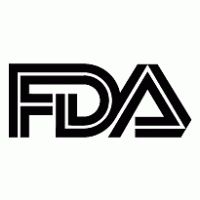Article
Consistent Published Evidence Lacking Behind FDA Regulatory Decisions Over FAERS Safety Signals
Author(s):
New data suggest transparency regarding drug safety regulatory response has not been consistent in recent years.

Safety signals identified from the US Food and Drug Administration (FDA) Adverse Event Report System (FAERS) have been recently leading to appropriate response by the drug agency—but published research corresponding to such issues is still lacking.
In findings from a new cross-sectional analysis, a team of Yale investigators observed disparities in the rate of publicly-available research relevant to the rate of regulatory actions taken by the FDA in response to FAERS safety reports.
Their analysis, which includes regulatory actions from 2008 - 2019, may suggest the agency is either taking regulatory response on the basis on evidence not made publicly available, or they are doing so without comprehensive safety evaluations on the basis of FAERS reports.
Investigators led by Meera M. Dhodapkar, a medical student with Yale School of Medicine, and Joseph S. Ross, MD, MHS, professor of medicine at Yale, conducted the study to determine the frequency of FAERS-related safety signals and resulting regulatory action by the FDA—as well as to interpret whether the actions taken by the FDA were corroborated by published research findings or public assessments.
“Post-marketing pharmacovigilance is an essential component for monitoring drug safety, providing early identification of potential adverse events related to drugs through a combination of voluntary and active surveillance efforts,” they wrote. “Potential signals from the FAERS have resulted in numerous safety communications and boxed warnings, each of which has the potential to affect which drug treatments patients use, change prescribing habits of physicians, and even influence decisions about insurance coverage.”
The team used FAERS data from 2008 - 2019 to identify safety signals reported by drug manufacturers, clinicians and patients—comparing those with what was reported by the FDA in that time. They additionally reviewed relevant literature published before and safety signals reported in 2014 - 2015.
From these data, investigators observed 603 potential safety signals via FAERS reported by the FDA from 2008 - 2019—a median annual rate of 48. Of the signals, 413 (68.5%) were resolved as of December 2021; 93.2% that were ≥3 years old were resolved by that time.
More than three-fourths (78.0%) of resolved safety signals resulted in regulatory action; the most common actions was changes to drug labelling (77.2%) followed by drug safety and public communications from the agency (14.3%).
Investigators observed 82 potential safety signals reported from the 2014 - 2015 period included in their literature review; 76 were resolved by the FDA, and relevant published research was identified for 57 of those resolved signals. Of that subset, FDA regulatory actions were corroborated by ≥1 relevant published research study for 17 (29.8%) resolved safety signals.
“Our findings suggest that the FDA has a low evidentiary threshold to change drug labeling to include new adverse events after identification from the FAERS,” investigators wrote.
In an editorial accompanying the article, Dr. Barbara Mintzes, associate professor at the University of Sydney School of Pharmacy, and Colleen Fuller, of the Independent Voices for Safe Effective Drugs, stressed the importance of bolstered and consistent public transparency in safety signal-associated regulatory responses.
“Publication of safety signals is important, but this step is only the first towards transparency, with full public access needed to the evidence supporting all decision making, including decisions not to act,” the wrote. “The COVID-19 pandemic has exposed the tension underlying regulatory decisions and the public’s right to know about serious risks associated with medical interventions.”
Mintzes and Fuller noted the tension of discourse surrounding information on thromboembolic risks associated with the ChAdOx1-S (Covishield) COVID-19 vaccine from more than a year ago, citing the need for publicly-available randomized, controlled trial data that would fully disclose vaccine safety and efficacy prior to any regulatory decisions.
“This same tension exists more broadly in medicine safety,” they wrote. “Safety signals are an important step, but radical transparency about available evidence and the basis for regulatory judgments is needed to reduce harm caused by medicines, as is adequate follow-up to ensure safer use.”
The study, “Characterization and corroboration of safety signals identified from the US Food and Drug Administration Adverse Event Reporting System, 2008-19: cross sectional study,” was published online in The BMJ.



